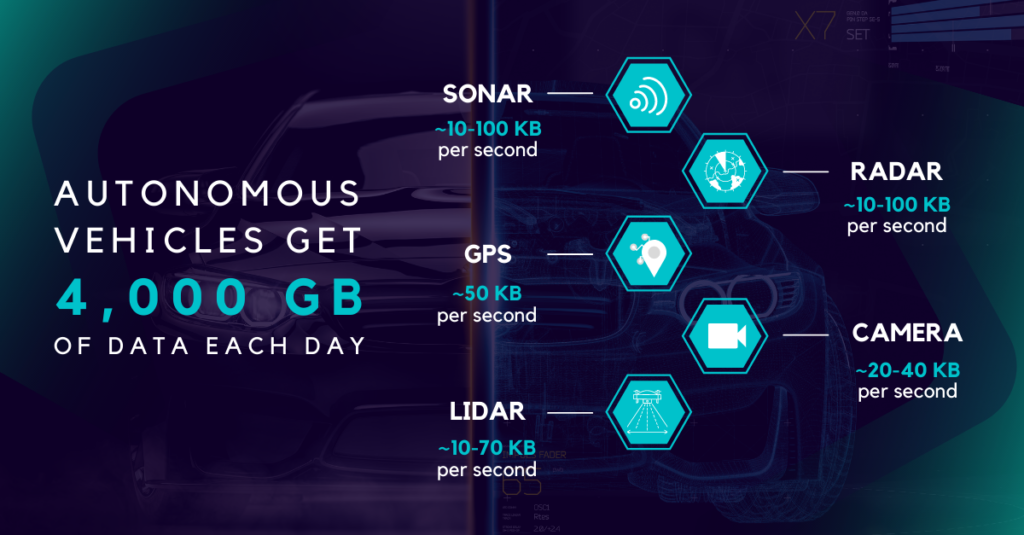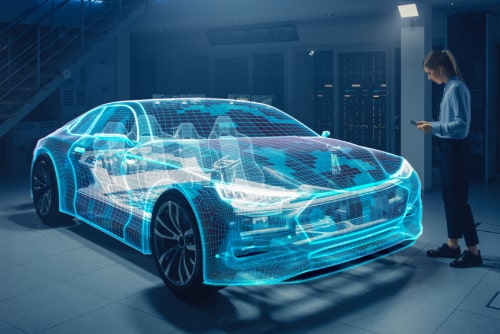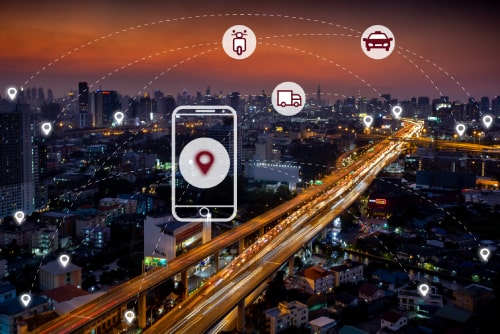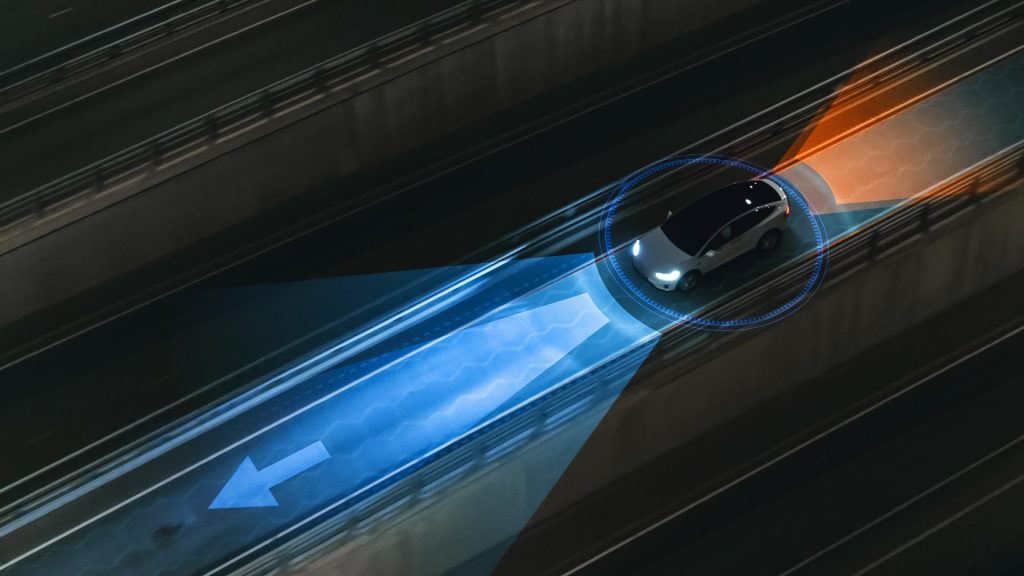Advanced Technologies & Insights
There is little doubt nowadays about the growing importance of data science, big data, and machine learning (ML), especially in the automotive industry. Autonomous cars are a trending topic in all circles of interest, both for experts in the field and regular people who just want to upgrade their cars. Thanks to the advancements in technology, automakers gained access to numerous autonomous features, enabling them to radically transform automobiles into vehicles connected 24/7 to the Internet. Basically, cars are not just mere means of transportation, but can also entertain us, make calls, shop, pay bills, or even save lives.
The innovation in the automotive industry is no longer driven by manufacturing, but by data science. The data gathered during the process of manufacturing and driving can now be used to improve all the processes related to vehicles and to make driverless cars a reality. In this article, we’re going to dig deeper into advanced aspects related to data science, big data, and ML, looking closely at how all of this data can be used to improve the production, finance, product development, and customer analytics in the automotive industry, as well as promote the concept of smart cities.
The Data Behind the Data Science Concept
Modern cars are now loaded with sensors. Back in 2014, a report from Mckinsey estimated that the global market for connectivity components was around $38 billion at that time, and would grow to over $215 billion by 2020. Today, in 2022, this market has exceeded $250 billion and is expected to grow at a CAGR of around 16% over the next three years.
Experts estimate that modern cars generate about 4,000 GB of data per day. Let’s take a close look at the following image to better understand where all this data is coming from.

As you can notice, modern cars cannot exist without big data and without thousands of sensors that are capturing all this huge amount of information. In autonomous driving, data science is used to ensure the car does not simply take the driver from point A to point B but also understands what happens around it.
Using all of this data, the autonomous car can build strategies to tackle possible situations on the road. For instance, data shared from thousands of cars on the road can enable drivers to avoid traffic jams, and obstacles on road, and react better to certain emergencies.
An autonomous car is equipped with three main hardware: sensors, processors, and actuators. The information collected from the sensors usually travels through the processor, which in turn uses actuators to tell the car what to do. This modern vehicle is equipped with countless sensors, from ultrasonic sensors used to measure the position of the objects close to the vehicle to LIDAR sensors that can identify markings and edges of the road.
By managing to turn the driver experiences into programmable information, experts can make autonomous cars much more practical than ever before. Of course, all of this data is not only used in the interest of the end driver but also to enhance the production process, boost finance and turn regular cities into smart cities.
Let’s take a closer look at how data science is actually used in autonomous driving today.
Uses of Data in the Automotive Sector
Use #1 – Production
Data science is quite useful in the production phase of a vehicle. For instance, this technology that leverages ML can be used to predict operator capacity with 96% accuracy. This data science solution now enables automakers to plan the operator capacity effectively, with the end result of decreasing the gaps between the actual number of operators and the required number. This drives up productivity and ensures the level of occupancy level remains steady across all departments.
Use #2 – Finance
Another use of data science is to predict VAT (value-added tax) codes and avoid unnecessary costs. In the production process, more specifically in finance, orders are generated once for each model, but the manufacturing period can last several years. This one-time order generation is based on unique parameters, such as the country in which the parts are produced, the location to where these parts are delivered, or the countries of different stocks and logistic centers.
In this case, a VAT code is assigned automatically to the order. This code indicates the value of the VAT in percentages (%). However, even if parameters (such as country, terms, etc.) can change over time, the VAT code recorded in the system remains unchanged. As a result, in some cases the VAT applied is not the right one, so the amount of VAT paid to accountable institutions is also incorrect, which ultimately translates into monetary penalties and fines.
The machine learning model can be used to predict the VAT code every month based on learned data from the last year (from a total of hundreds of thousand observations). This solution can be applied not just to predict VAT codes, but also to compare the real VAT code with the predicted one, with a 90% accuracy. This data science solution enables the automakers to save time and avoid problems with the finance institutions by paying penalties for incorrect amounts of VAT paid.

Use #3: Automation
Data science is also extremely effective at automating data processes and processing information. This saves resources, which can then be used by automakers to tackle activities that bring a greater added value. With data science, large reports’ processing time can be reduced drastically, from over 10 hours to 30 or 45 minutes.
Use #4: Smart Cities
Today, data science can be used by local communities and governments to transform regular cities into smart ones. With data science, cities can gain increased mobility for lower-income communities. Data can be used to make transportation easily accessible without the high cost of ownership.
For instance, automakers can provide optimization algorithms that offer businesses energy-efficient vehicles to serve rural communities. Data scientists are also working with reliability engineers to produce vehicles that assist certain communities.
In 2022, the combination of the right data and ML can be leveraged to shape the smart cities of the future. All the data collected from autonomous cars can transform the smart city vision into reality by improving traffic management, parking services, accident detection, road usage tax, emission management, and of course the electric vehicle charging infrastructure.
Use #5: Product Development
Today, automotive data scientists leverage data science and big data to ensure that only high-quality vehicles are sold. While engineers are capable of testing the quality of each vehicle, this task has to be performed on an individual basis for each vehicle, which is where automation comes into play.
Data scientists can analyze an entire population of parts, suppliers, and test data. They closely analyze the financial performance of suppliers, predict their ability to deliver on time given past performance, and use econometrics with regressions to check the economic conditions of supplier locations.
Use #6: Connected and Autonomous Vehicles

Modern connected and autonomous vehicles rely on deep learning models and sensor fusion algorithms. Data science is crucial to building these vehicles, being used to translate IoT indicators like oil life monitors, battery charge monitors, and full diagnostics instrumentation into actionable insights. For example, it’s not enough to simply detect a pedestrian—sensors must be able to discern where they’re walking to. Safety systems are also quite important, including driver protection and environmental safety.
The modern connected systems for autonomous vehicles provide new, improved services, being able to connect with other vehicles, cities, and infrastructure. The globally connected vehicle market is increasing rapidly, from $63 billion in 2019, and is being posed to almost quadruple to $225 billion by 2027, according to Allied Market Research.
Use #7: Sustainability Initiatives
Today, sustainability is very important to all automotive manufacturers. While governments set targets for fuel efficiency at a national or continental level, each auto company also has its own goals. Because each and every vehicle has a different fuel efficiency, data science is necessary to optimize the fuel efficiency of a company’s entire line of vehicles.
Thus, if an automaker wants to offer both a large gas-guzzling pickup truck and an electric car in its product line, automotive data scientists can perform an optimization to minimize the fuel consumption of the entire fleet while adhering to the company’s global sales targets. These optimization efforts can allow auto manufacturers to claim government credits for fuel-efficiency.
Data science used in sustainability initiatives comes with a threefold benefit: it’s great for the environment, provides more value to the end customers, and opens up a potential source of income for employees.
If you’ve enjoyed reading this article and you would like to know more about how Tremend implements data science projects in the automotive industry, do not hesitate to contact us now.


